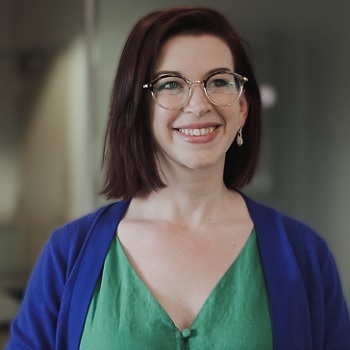Dr. Micaela Weaver is a fellowship-trained breast surgeon at Women & Infants Hospital and Kent County Memorial Hospital and a clinical instructor of surgery and obstetrics and gynecology at Brown University.
Weaver was recently selected as one of the Association of Women Surgeons’ “40 Under 40,” a recognition that highlights more than 40 outstanding women surgeons under the age of 40. She discusses new techniques in breast surgery, the importance of mammogram screenings and risk factors for breast cancer.
PBN: What’s your reaction to being recognized as one of the outstanding women surgeons under the age of 40 by the Association of Women Surgeons?
WEAVER: Of course, my first reaction is, it is such an honor and a privilege. As I then reevaluate, why me? I realized that I had used my own experiences in residency training to strengthen my determination and dedication to foster both women and men through the medical education training process. I remained focused on helping both myself and others overcome the ethnic, economic and gender diversity barriers we continue to face both in medicine and the larger American community.
For me to be recognized alongside so many incredible women from around the world who are leaders and trailblazers is truly an honor. I have also had some incredible mentors, especially since arriving in Rhode Island, and I am grateful to have had such solid guidance and leadership help direct and support my career.
PBN: What interested you in specializing in breast surgery?
WEAVER: In two words: the patients. Breast surgery is a uniquely special field of surgical medicine. A breast surgeon is often the first physician to explain the cancer treatment plan to a patient. Along with the oncology team, we have the chance, most of the time, to take a frightening diagnosis of cancer and delineate the interdisciplinary pathway to survivorship.
As the surgeon, we remove the cancer, and patients often credit us with curing them. Yet, I know that it was the whole team – the radiologist who read the mammogram, the pathologist who read the biopsy, and our oncologists from radiation and medicine. Again, as a surgeon, I also love the technical aspects of my job and that it requires me to always be learning and thinking. It is incredibly rewarding and such a privilege to have the opportunity to guide patients through such a difficult time in their lives.
PBN: Are there any exciting surgical developments that have been made in the field recently? Or any future ones you are hoping to see at one point in your career?
WEAVER: I think one of the most impactful developments has been the acceptance of the breast as an integral part of a woman, and a man, that deserves to be respected. We have hidden scar and oncoplastic surgical techniques that limit post-treatment deformity that once was routinely accepted. This allows many women to maintain a natural breast shape and reduces the need for mastectomy.
Also, a new technique called lymphovenous anastomosis can reduce lifelong arm swelling or lymphedema. By connecting a lymphatic channel from the arm and a vein during surgery, we reduce the risk of developing lymphedema. We continue to explore techniques that allow us to destroy the tumor in the breast without surgery, such as cryoablation and drug therapy, but these are still emerging technologies, and I see my career lasting still several decades.
PBN: October was Breast Cancer Awareness Month. What do you wish people knew about breast cancer, including screening methods and the importance of early detection?
WEAVER: Mammograms save lives. Hands down, the most studied effective way to reduce the risk of dying from breast cancer is to get annual mammogram screening. There has been a lot of confusion in the media and with various guidelines, but we continue to see women who are younger and have more advanced cancers – many of which could have been identified earlier if the patient had gotten a mammogram.
It’s also important to mention that there are now screening guidelines for men with certain genetic mutations and transgender patients – both male-to-female and female-to-male. Rhode Island was a pioneer in establishing 3D, or tomosynthesis mammogram, as the standard technique across the state. This technique helps to mitigate the challenges of imaging a dense breast and has reduced the average size of breast cancer at the time of diagnosis in R.I. significantly.
PBN: What makes someone at high risk for breast cancer? What risk factors should women be aware of?
WEAVER: The most significant breast cancer risk factor is a genetic mutation, like the BRCA1/2 gene about which Angelina Jolie was so public. Cancer genetic testing is increasingly covered by medical insurance, and patients should discuss their options with their provider, even before a cancer diagnosis. Special screening is available depending on the genetic details.
Other important risk factors beyond genetics are still a family history of multiple breast cancers, especially when diagnosed under the age of 50, a personal history of radiation to the chest for some childhood cancers, certain types of abnormal cells seen on breast biopsies, and women with mammographically dense breast tissue.
If someone is concerned [that] they may be at high risk, they should talk to their doctor or come see us at the Breast Health Center at Women & Infants or Kent.
Claudia Chiappa is a PBN staff writer. You may contact her at Chiappa@PBN.com.












